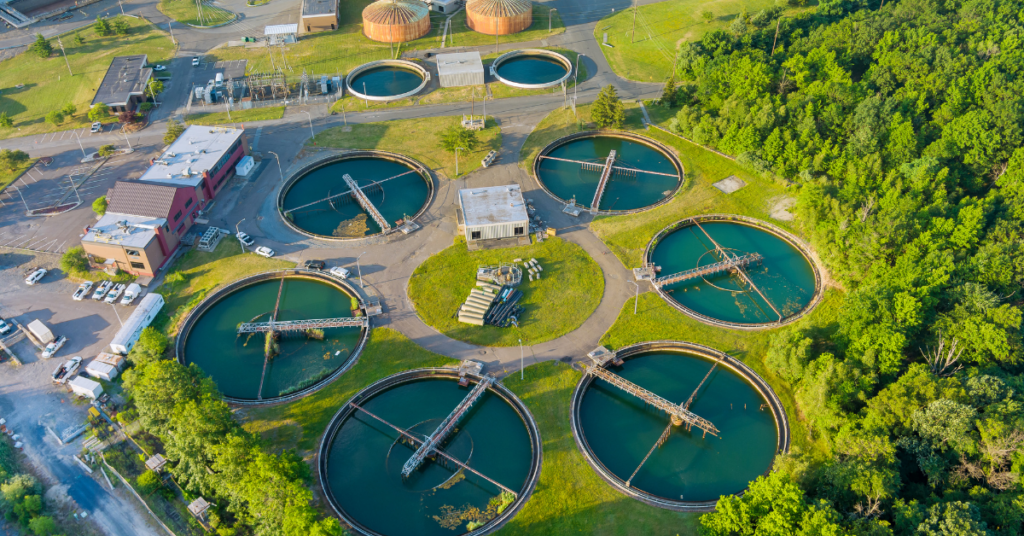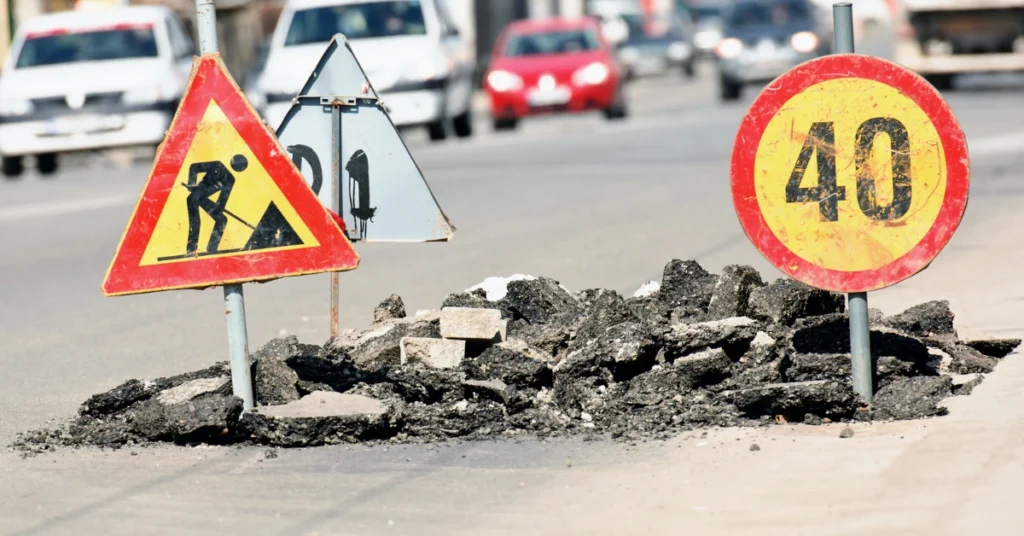Introduction: The Role of AI in Shaping Future Cities
As urban populations grow, cities worldwide face unprecedented challenges in managing resources, reducing emissions, and improving residents’ quality of life. Enter Artificial Intelligence (AI)—a transformative force in urban planning and sustainability. Through predictive data, automation, and intelligent systems, AI is revolutionizing cities by creating smart, efficient, and sustainable urban environments.
AI-powered tech innovations are already addressing critical urban issues like traffic congestion, waste management, and energy efficiency. Leading cities around the world are leveraging AI to build smarter infrastructures, supporting sustainability while enhancing urban livability. In this article, we’ll explore how AI is transforming cities, from advanced traffic management to green energy solutions, and how it’s paving the way for a more resilient and connected urban future.
AI in Traffic and Mobility Management
One of the most visible applications of AI in urban environments is in traffic and mobility management. Traffic congestion is a major issue in cities, leading to high emissions and loss of productivity. AI technologies can help mitigate these problems through smart traffic systems, real-time data analysis, and predictive modeling, making city travel more efficient.
Smart Traffic Systems: Reducing Congestion and Emissions
AI-powered traffic management systems use data from sensors, cameras, and IoT devices to monitor traffic flow, identify bottlenecks, and adjust traffic lights dynamically. For instance, cities like Amsterdam and Los Angeles have implemented smart mobility initiatives to reduce congestion by optimizing traffic patterns in real-time. These systems can reduce emissions by minimizing idle time at traffic lights and optimizing fuel efficiency.
AI not only makes travel more efficient but also promotes sustainable practices by supporting public transportation. With AI-driven insights, cities can identify high-demand areas for bus or metro services, improving accessibility and reducing the dependency on personal vehicles. This transition not only reduces carbon footprints but also aligns with global goals for sustainable urban living.

Autonomous Vehicles and Ridesharing
AI is the driving force behind autonomous vehicles (AVs) and intelligent ridesharing, which are reshaping urban mobility. Companies like Waymo and Tesla are leading the way with self-driving technologies that promise safer, more efficient transportation. AVs have the potential to reduce traffic accidents and improve mobility for all residents, including those with disabilities.
In addition to autonomous vehicles, AI is transforming ridesharing services through dynamic pricing, efficient route optimization, and demand prediction. By minimizing deadhead miles (empty travel), AI-driven ridesharing reduces fuel consumption and traffic congestion, contributing to more efficient urban mobility. As AI technologies continue to advance, cities are closer to realizing a future of sustainable, autonomous, and efficient transportation.
AI for Energy Efficiency and Resource Management
As cities strive for sustainability, managing resources efficiently has become paramount. AI plays a crucial role in energy optimization, helping cities reduce waste, lower emissions, and transition to renewable energy sources. Smart grids, AI-driven monitoring, and predictive analytics are allowing urban centers to use resources more wisely and sustainably.
Smart Grids: Optimizing Energy Use in Real Time
AI-powered smart grids enable cities to manage energy consumption dynamically, adjusting electricity distribution based on demand and supply. For instance, smart grids equipped with AI can redirect power to where it’s most needed, reducing energy waste and minimizing blackouts. In cities like Singapore, AI-driven sustainable living initiatives include smart grids that adapt to real-time energy demands, making urban power usage more efficient and eco-friendly.
Smart grids also facilitate the integration of renewable energy sources, such as solar and wind, by balancing fluctuations in power production. This is essential for cities looking to reduce their reliance on fossil fuels and adopt cleaner energy solutions. By connecting energy sources with AI, cities can create more resilient and adaptable power networks.
AI-Driven Waste Management and Water Conservation
In addition to energy management, AI is helping cities improve waste management and water conservation. AI systems can analyze waste patterns, predict peak waste times, and optimize waste collection routes, reducing the need for constant pick-ups. AI-powered recycling systems can even sort recyclable materials automatically, enhancing recycling rates and reducing landfill usage.
AI is also being used to manage urban water systems more effectively. Smart sensors detect leaks in water pipelines, saving cities from water wastage and lowering utility costs. With the help of AI-driven water management, cities can conserve this vital resource, ensuring more sustainable water use as urban populations grow.

AI in Renewable Energy Management
AI is revolutionizing renewable energy integration in cities by enabling efficient management of resources like solar and wind. Smart grids equipped with AI technology can predict energy demand, match it with renewable supply, and store excess energy. For instance, AI can optimize energy storage in battery systems, ensuring a consistent power supply even during low production periods.
By using AI to streamline energy usage, cities reduce their reliance on fossil fuels and minimize emissions. As cities grow, AI-driven renewable energy management will play a key role in maintaining sustainable, resilient power systems.
AI in Public Safety and Urban Resilience
As cities grow denser, public safety and resilience become critical. AI-driven technologies provide powerful solutions to enhance safety and emergency preparedness, helping cities respond swiftly to potential threats and natural disasters. By analyzing real-time data, predicting risks, and supporting emergency management, AI can make urban environments safer for everyone.
Predictive Policing and Crime Prevention
AI-powered predictive policing is helping cities anticipate and prevent crime by analyzing historical data, identifying patterns, and deploying resources more effectively. For instance, police departments in cities like Los Angeles use AI tools to forecast high-risk areas for crime, allowing officers to patrol strategically. While there are ongoing discussions about ethics and privacy, AI-driven crime prevention has shown potential to enhance public safety by reducing crime rates.
Additionally, AI-enabled surveillance systems can detect unusual behaviors or suspicious activities through pattern recognition, providing authorities with early alerts. By integrating AI with traditional public safety measures, cities can create a more proactive approach to crime prevention.
AI in Emergency Response and Disaster Management
AI plays a crucial role in managing and responding to emergencies, such as fires, floods, and other natural disasters. In Japan, where earthquakes are common, AI systems help analyze seismic data to predict earthquake impacts, allowing the government to coordinate evacuation plans effectively. Similarly, AI-driven drones are used to assess damage in real-time, helping emergency responders locate affected areas faster.
AI also assists in tracking extreme weather conditions, enabling cities to prepare in advance for hurricanes, floods, and other severe weather events. By analyzing data from weather satellites, social media, and on-ground sensors, AI systems provide real-time updates and early warnings to communities, significantly enhancing urban resilience and saving lives.

Case Studies of AI in Leading Smart Cities
Several cities are at the forefront of implementing AI-driven solutions to improve sustainability, mobility, and safety. These case studies showcase how AI can transform urban living when applied thoughtfully and strategically.
Barcelona: AI for Urban Mobility and Environmental Health
Barcelona uses AI to monitor air quality, manage waste, and optimize public transportation routes, making it a model for eco-friendly urban management. By integrating AI with public transit data, the city reduces congestion and improves air quality, addressing environmental and health concerns simultaneously.
Tokyo: Enhancing Public Transit with AI
Tokyo, known for its efficient public transit, leverages AI to predict demand, manage schedules, and ensure the system runs smoothly even during peak hours. The AI system analyzes historical ridership data to optimize train frequency, reducing wait times and improving passenger satisfaction.
AI and Environmental Monitoring
Environmental sustainability is at the heart of modern urban planning, and AI is a key driver in achieving eco-friendly goals. From monitoring air quality to assessing biodiversity, AI-powered systems help cities track environmental health and implement strategies to reduce their ecological footprint.
Air Quality Monitoring and Pollution Control
AI has become an invaluable tool for monitoring air quality in densely populated cities. AI-powered sensors placed throughout urban areas collect data on pollutants such as carbon monoxide, sulfur dioxide, and particulate matter. Using machine learning algorithms, these systems provide real-time information on pollution levels, allowing city officials to make quick decisions, such as traffic restrictions, to reduce pollution.
Cities like Beijing and New Delhi, which have struggled with severe air quality issues, are now using AI-driven solutions to monitor and manage pollution. By correlating pollution data with sources, AI can also recommend effective pollution control measures, such as limiting industrial emissions on days when air quality is particularly poor.

Monitoring Urban Biodiversity
AI is also helping cities track and preserve urban biodiversity. Intelligent monitoring systems identify and count species, track plant health, and assess the impact of urban development on natural habitats. In Singapore, for example, AI systems monitor the growth of green spaces and assess how urban expansion affects local wildlife. This information helps urban planners make data-driven decisions to protect natural ecosystems within cities.
By ensuring biodiversity is preserved even in urban settings, cities contribute to healthier ecosystems and improve residents’ quality of life. Initiatives that incorporate AI-driven environmental monitoring align with the broader goals of sustainable living, creating urban areas that are resilient, green, and supportive of native wildlife.
The Future of AI in Smart Cities
As AI continues to evolve, its role in urban development will only grow, offering exciting possibilities for the future of smart cities. However, the journey comes with challenges related to data privacy, ethical considerations, and the digital divide. By addressing these issues, cities can harness AI’s full potential while promoting equitable and sustainable urban growth.
Data Privacy and Ethical Considerations
One of the major challenges of integrating AI into city life is data privacy. AI systems rely on vast amounts of data, often collected from residents through surveillance, smartphones, and sensors. Ensuring that this data is managed responsibly and securely is essential to maintaining public trust. Cities must adopt transparent data policies and implement strong cybersecurity measures to protect citizen data.
Furthermore, ethical AI use involves minimizing biases in algorithms, especially in areas like predictive policing, where errors can lead to discrimination. Governments and tech companies must work together to establish guidelines and frameworks that promote ethical AI practices, ensuring that AI technologies benefit all residents fairly.
Bridging the Digital Divide
As cities become increasingly AI-driven, there is a risk that communities without access to digital resources will be left behind. To ensure that AI-based smart city initiatives are inclusive, urban planners must consider ways to bridge the digital divide, providing all residents with access to the necessary technology and education. Policies that support digital literacy and affordable internet access are crucial for creating cities where everyone can benefit from AI advancements.
Addressing the digital divide is also important for engaging citizens in smart city development. By fostering an inclusive environment, cities can empower residents to participate actively in their communities and contribute to the success of AI-driven sustainability initiatives.
The Promise of AI for Future Urban Growth
Looking forward, AI has the potential to transform cities into sustainable, efficient, and adaptable environments. Through predictive analytics, real-time monitoring, and intelligent systems, AI will allow cities to manage resources dynamically, reduce carbon emissions, and improve quality of life for residents. As cities worldwide adopt AI, the shift toward smarter, greener urban spaces is inevitable.
Future Trends in AI for Urban Sustainability
Looking ahead, AI is poised to bring even more transformative advancements to urban sustainability. Emerging applications of AI are focusing on real-time citizen engagement, predictive maintenance of city infrastructure, and climate-responsive architecture.
Predictive Maintenance for City Infrastructure
AI-driven predictive maintenance uses data from sensors embedded in infrastructure, such as bridges, roads, and buildings, to detect wear and tear before it becomes critical. This helps cities save on costly repairs, reduce service interruptions, and ensure safer environments for residents.

Real-Time Citizen Engagement and Feedback
Smart cities of the future will leverage AI to create more responsive governance through real-time feedback. Using AI-powered apps and platforms, cities can gauge resident sentiment, gather feedback on urban projects, and make adjustments in real-time, resulting in more inclusive, citizen-driven city planning.
Conclusion
The integration of AI into urban planning and management is transforming cities into intelligent, sustainable spaces that meet the challenges of the modern world. From reducing traffic congestion to monitoring environmental health, AI offers solutions that make cities more livable, efficient, and eco-friendly. As the smart city revolution continues, the future of urban development is one where technology and sustainability work hand in hand to create healthier, more resilient communities.
AI’s role in urban environments highlights a profound shift in how cities operate, paving the way for a future that prioritizes both human well-being and environmental health. By investing in AI and ethical, inclusive policies, cities can lay the groundwork for a sustainable future that benefits everyone.






















